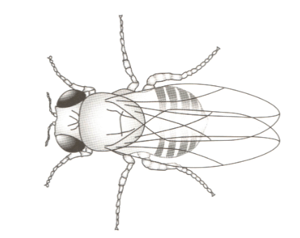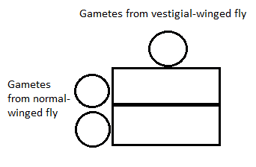Mary Jones and Geoff Jones Solutions for Chapter: Inheritance, Exercise 2: Exercise 16.2
Mary Jones Biology Solutions for Exercise - Mary Jones and Geoff Jones Solutions for Chapter: Inheritance, Exercise 2: Exercise 16.2
Attempt the practice questions on Chapter 16: Inheritance, Exercise 2: Exercise 16.2 with hints and solutions to strengthen your understanding. Biology for Cambridge IGCSE Workbook 4 th Edition Digital Access solutions are prepared by Experienced Embibe Experts.
Questions from Mary Jones and Geoff Jones Solutions for Chapter: Inheritance, Exercise 2: Exercise 16.2 with Hints & Solutions
State three features, visible in figure 16.2, that show that the fruit fly is an insect.

What is the genus of the fruit fly?
Fruit flies can have normal wings or vestigial (really small) wings. The allele for normal wings, N, is dominant. The allele for vestigial wings, n, is recessive.
Complete the table to show the possible genotype and phenotypes for fruit fly wings. Be very careful to write the letters N and n so that there is no doubt whether each one is a capital letter or a small letter.
| Genotype | Phenotype |
Complete the genetic diagram to predict the genotypes and phenotypes of the offspring of a heterozygous normal-winged fly and a vestigial-winged fly.
Phenotypes of parents: normal wings vestigial wings
Genotypes of parents: _____ _____
Gametes: _____ and _____ all _____

The two flies had 82 offspring. Predict approximately how many of these would have vestigial wings.
